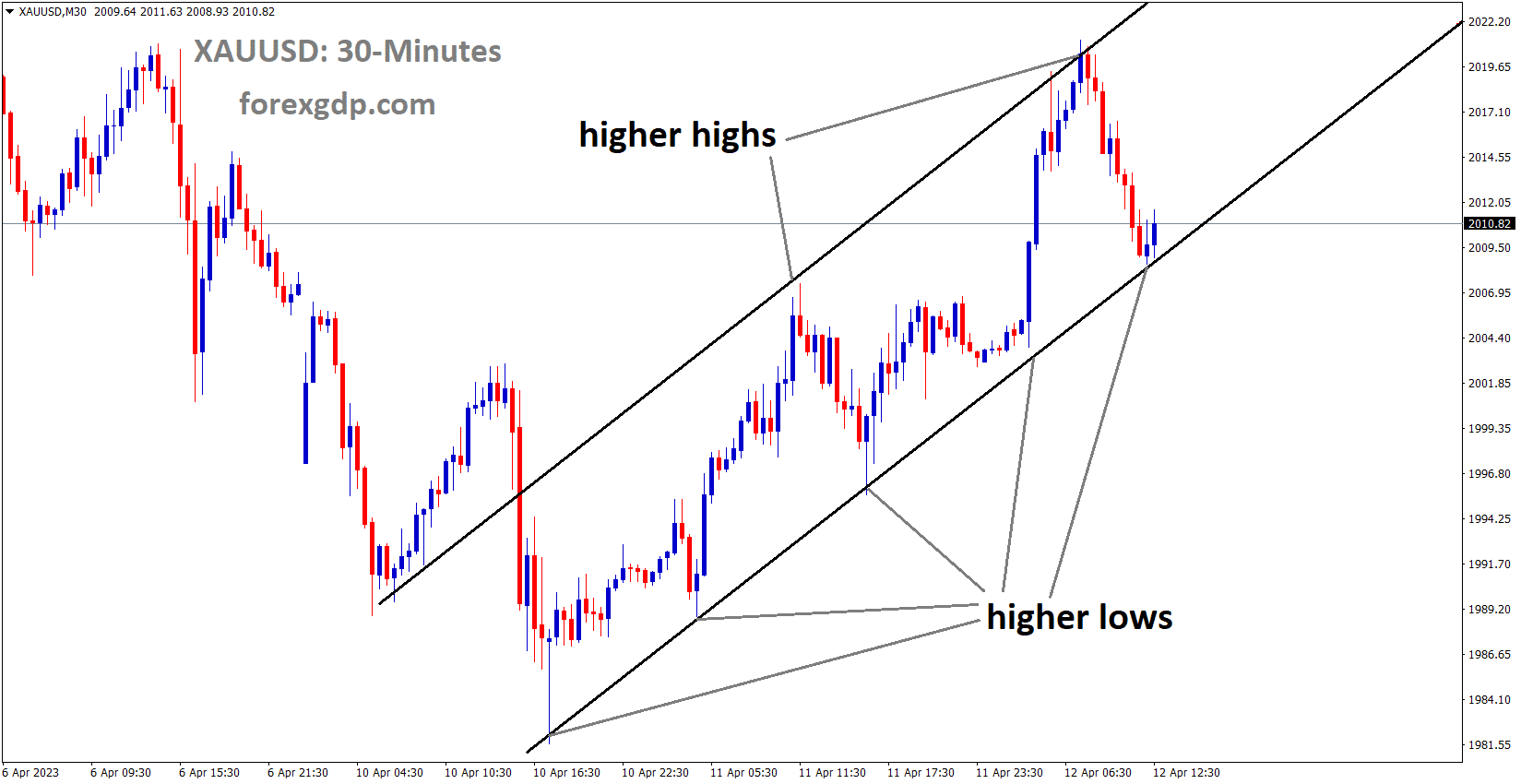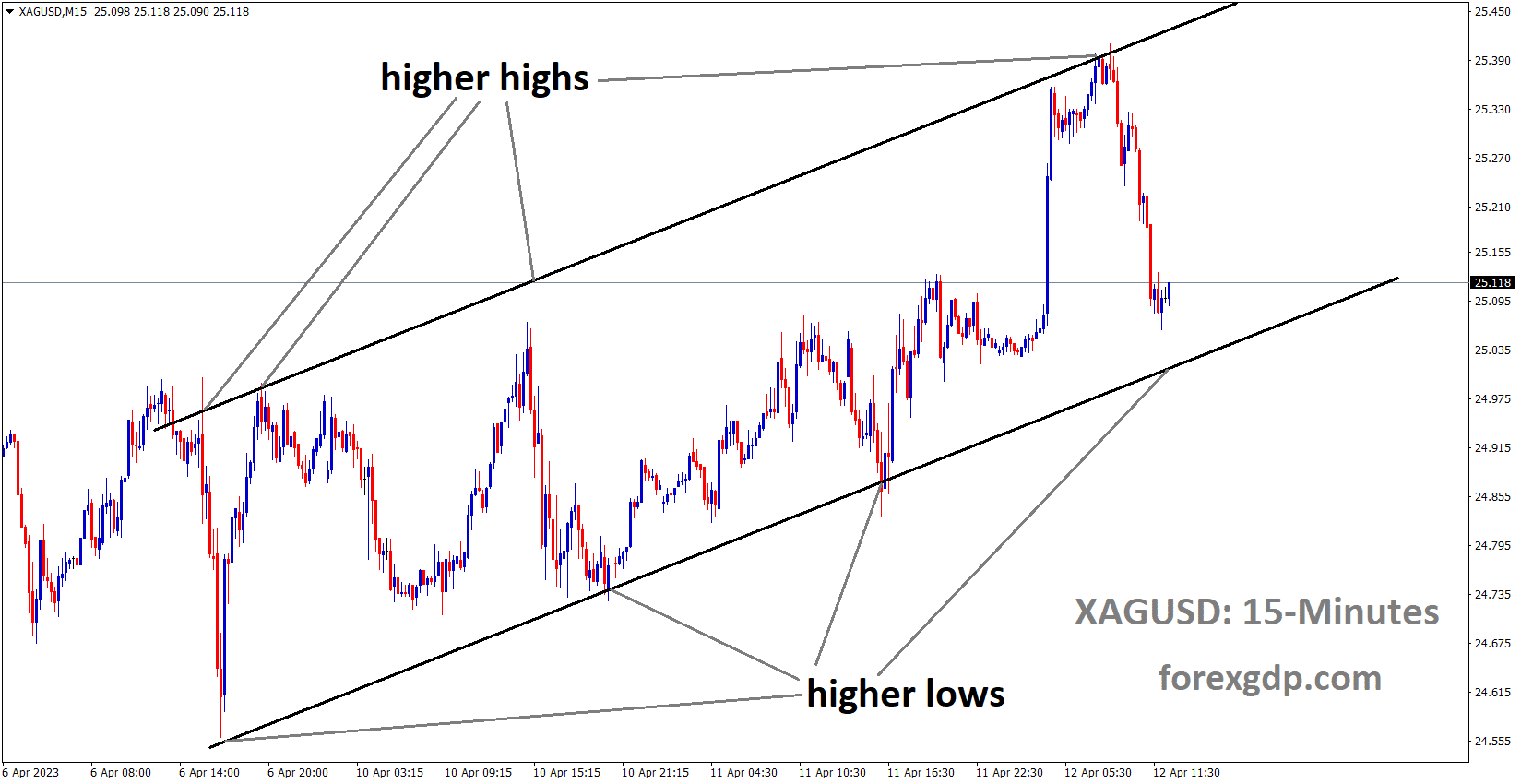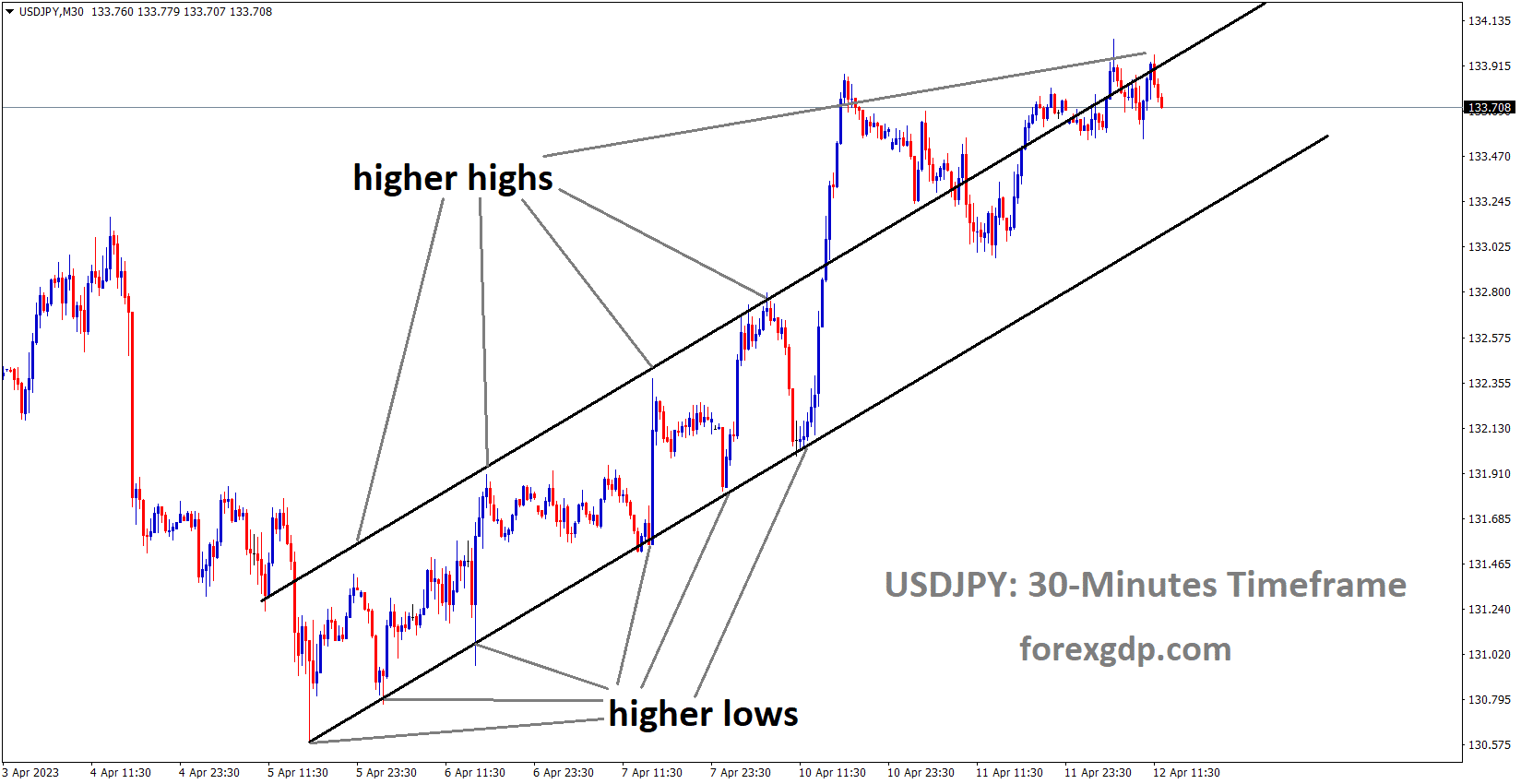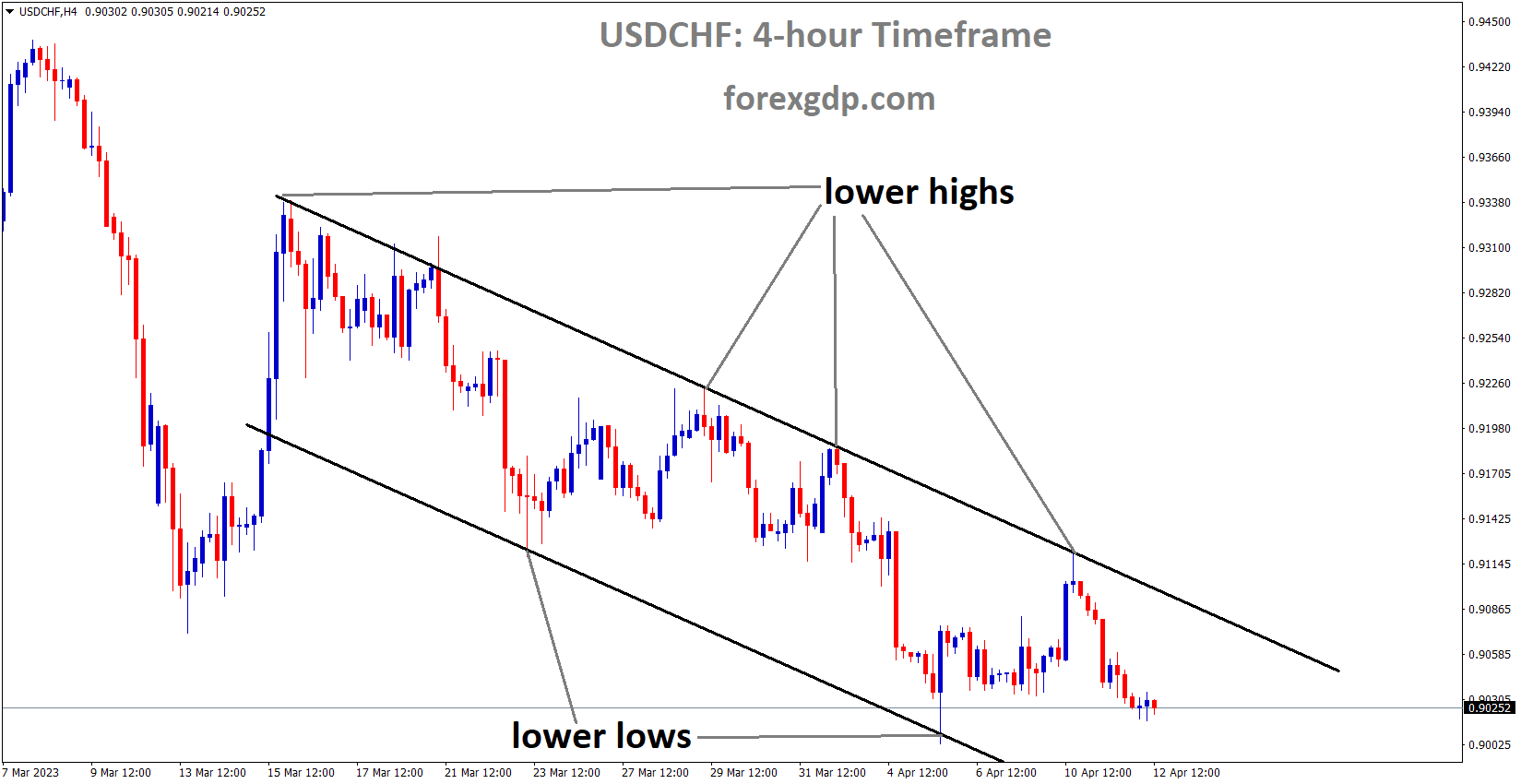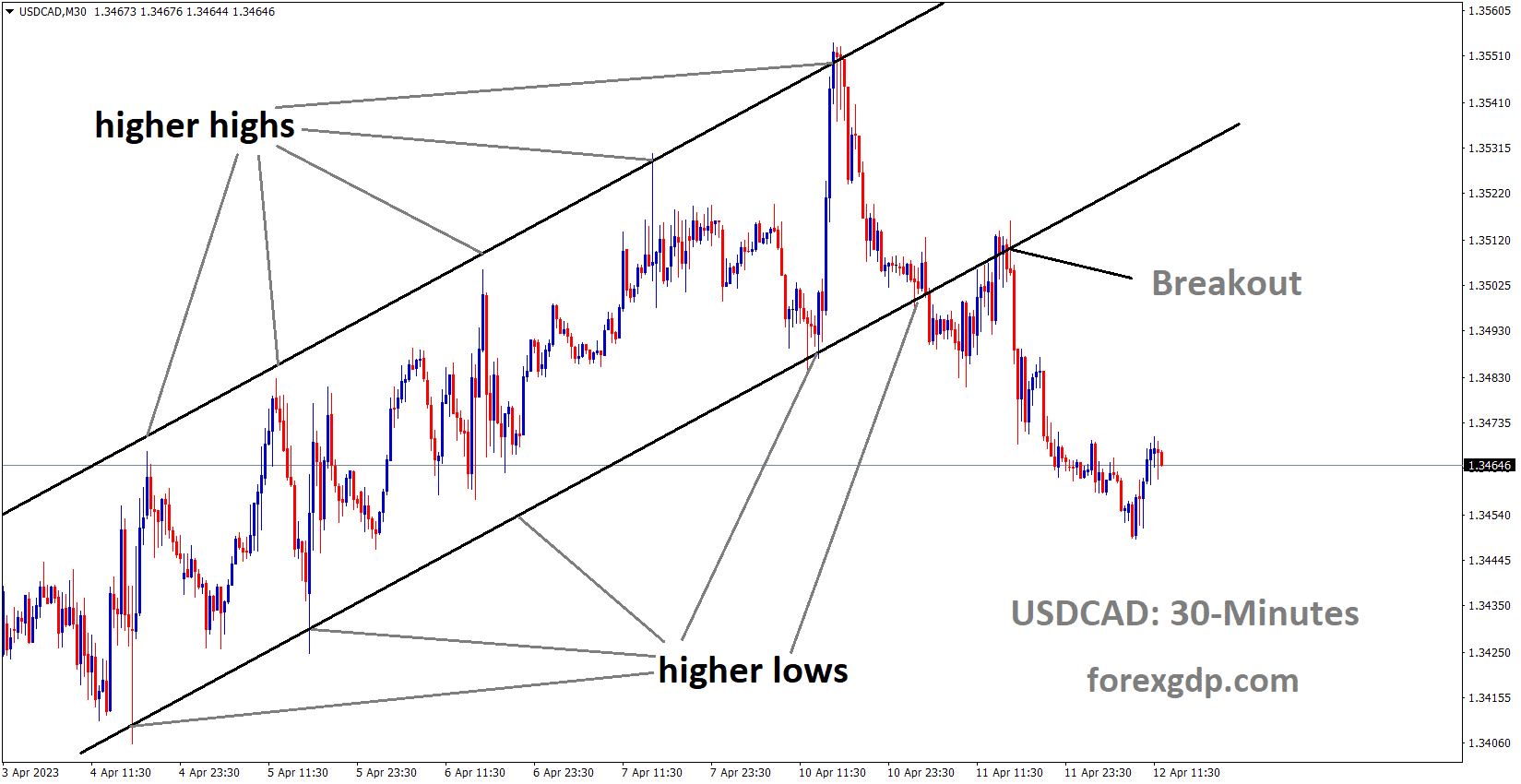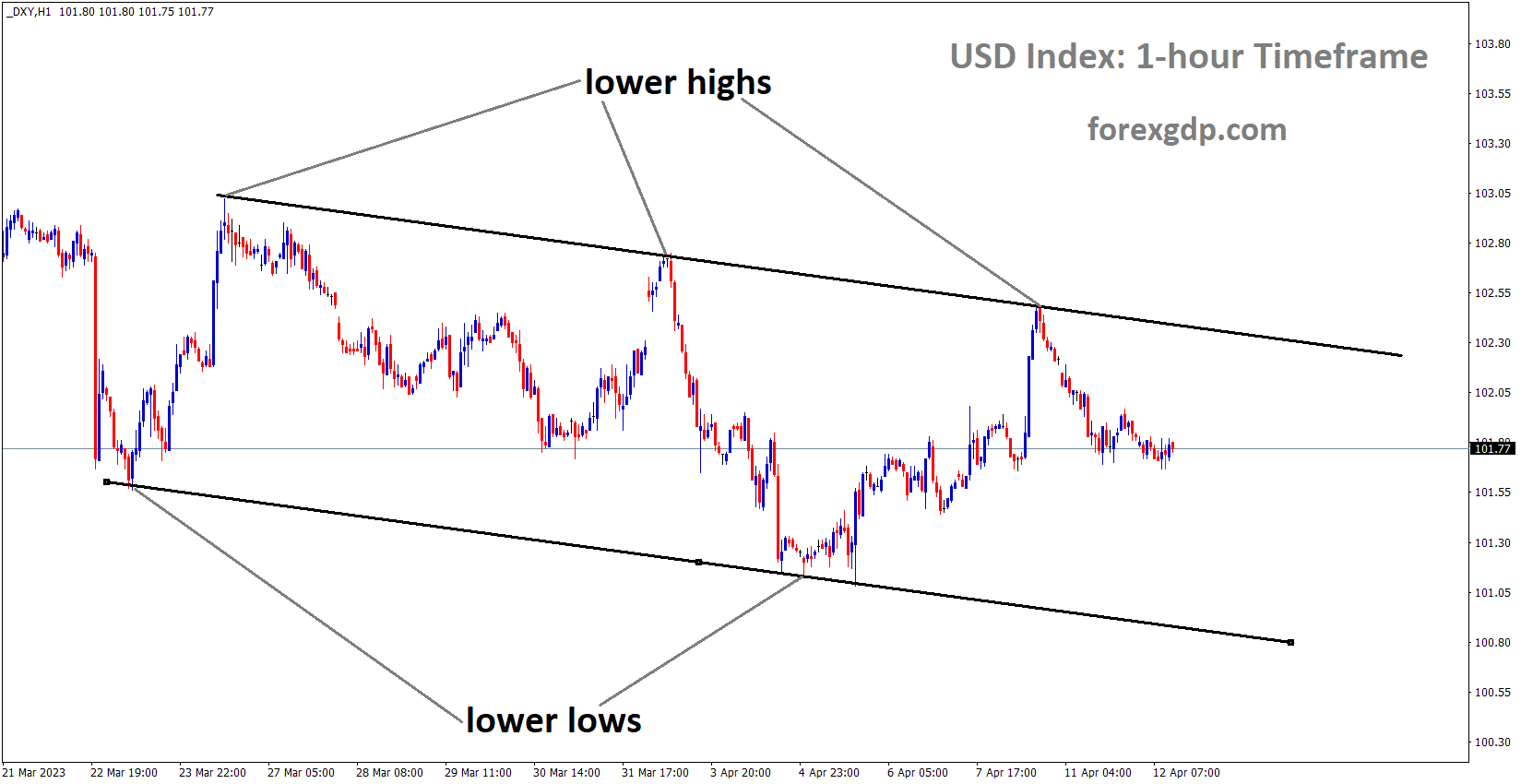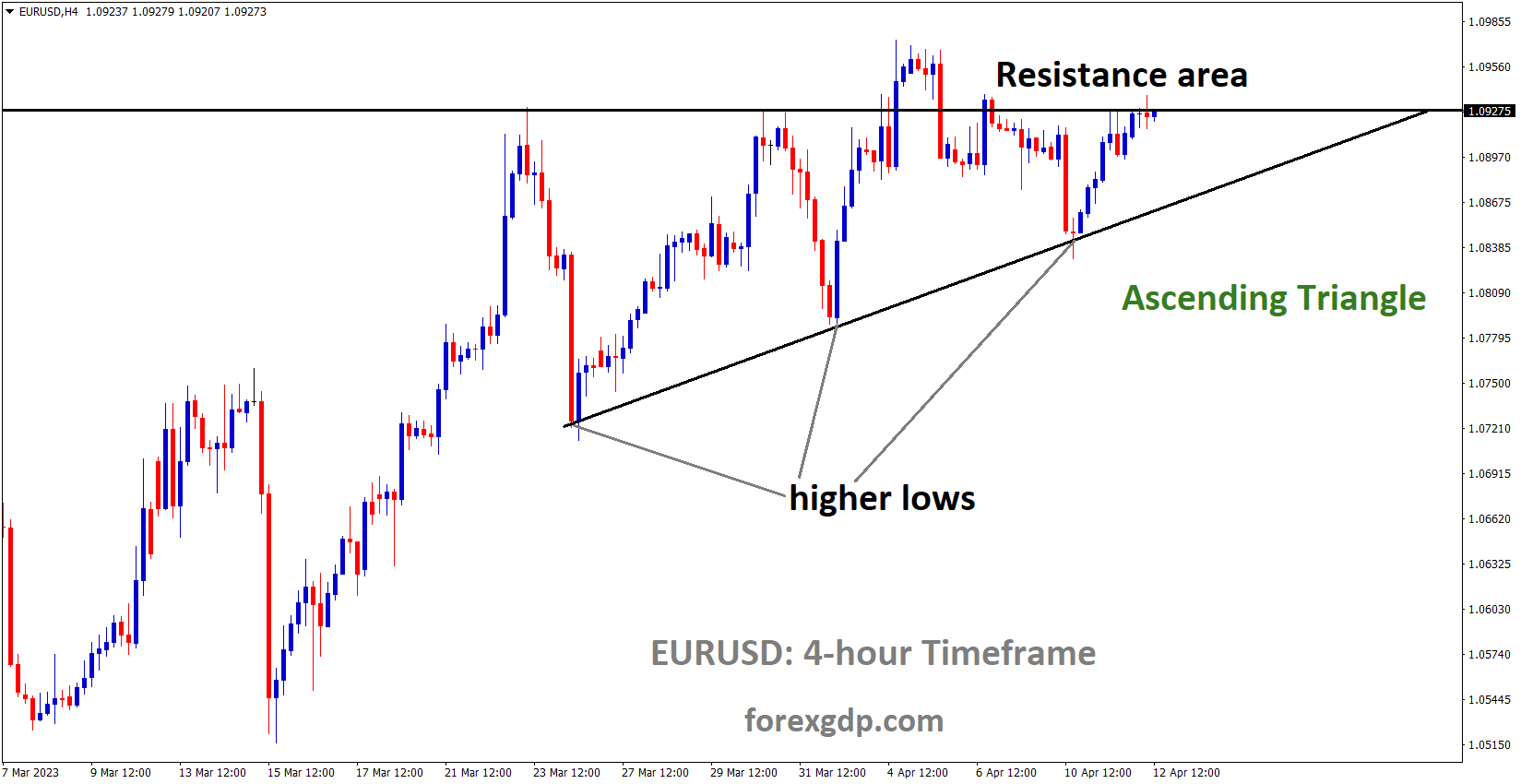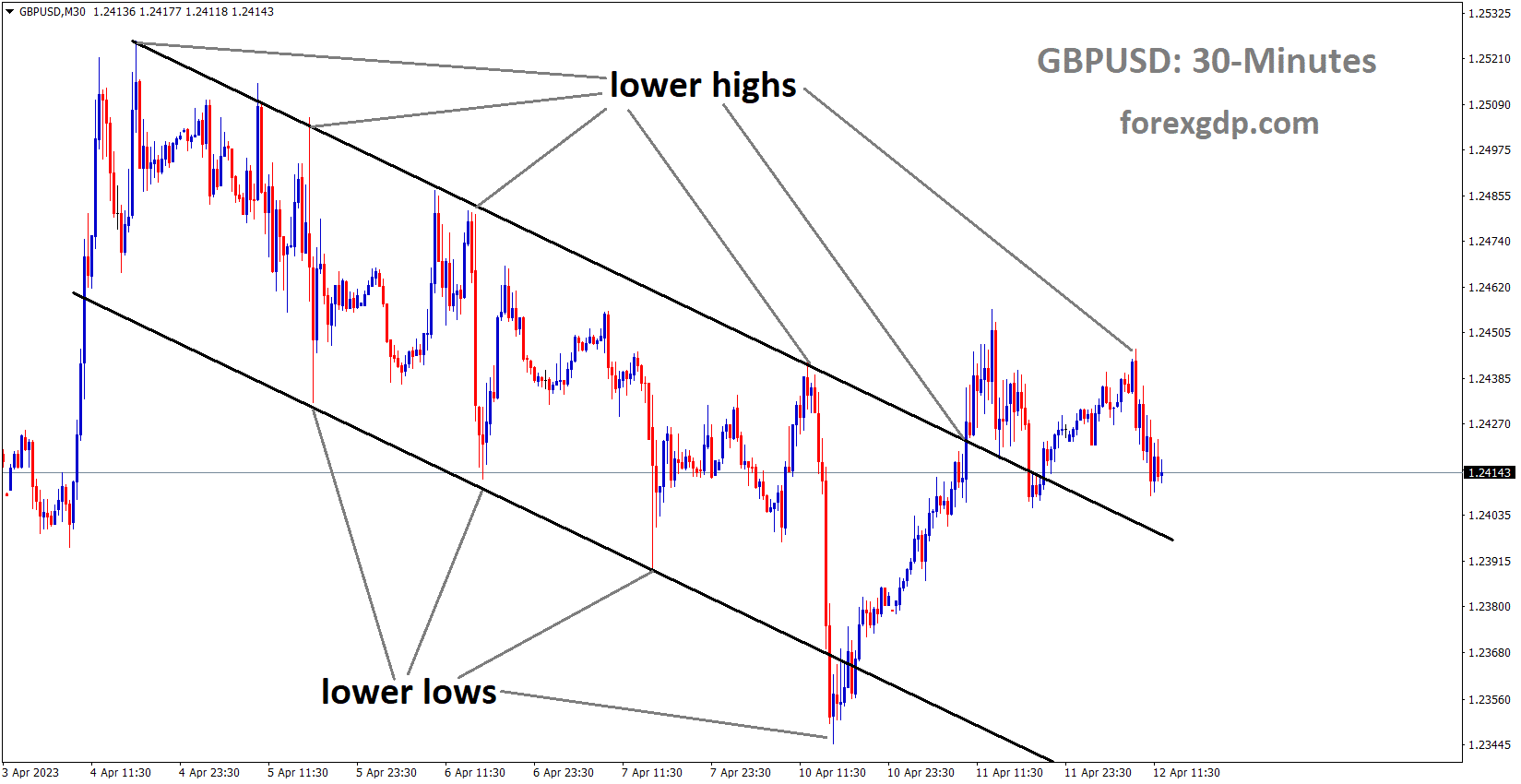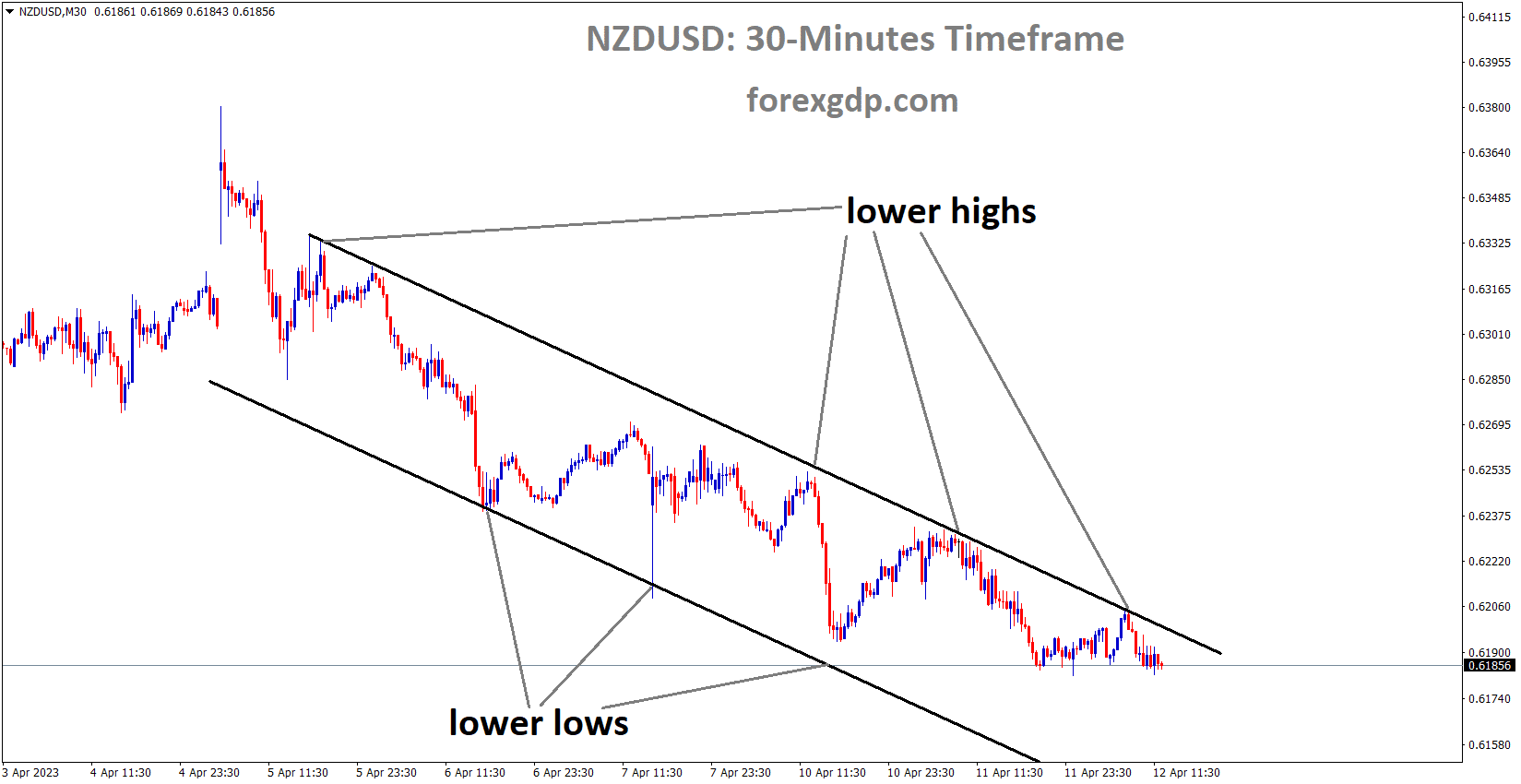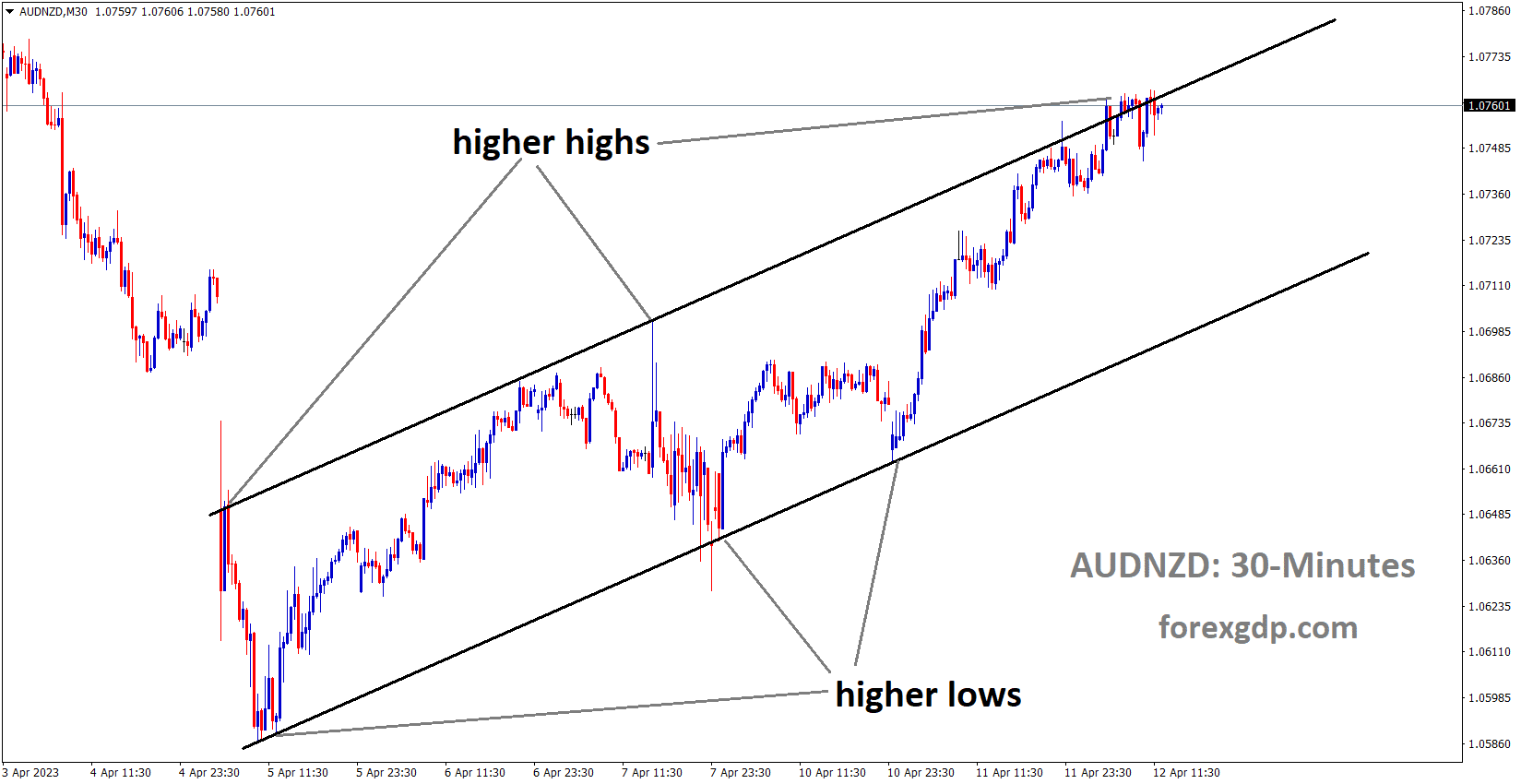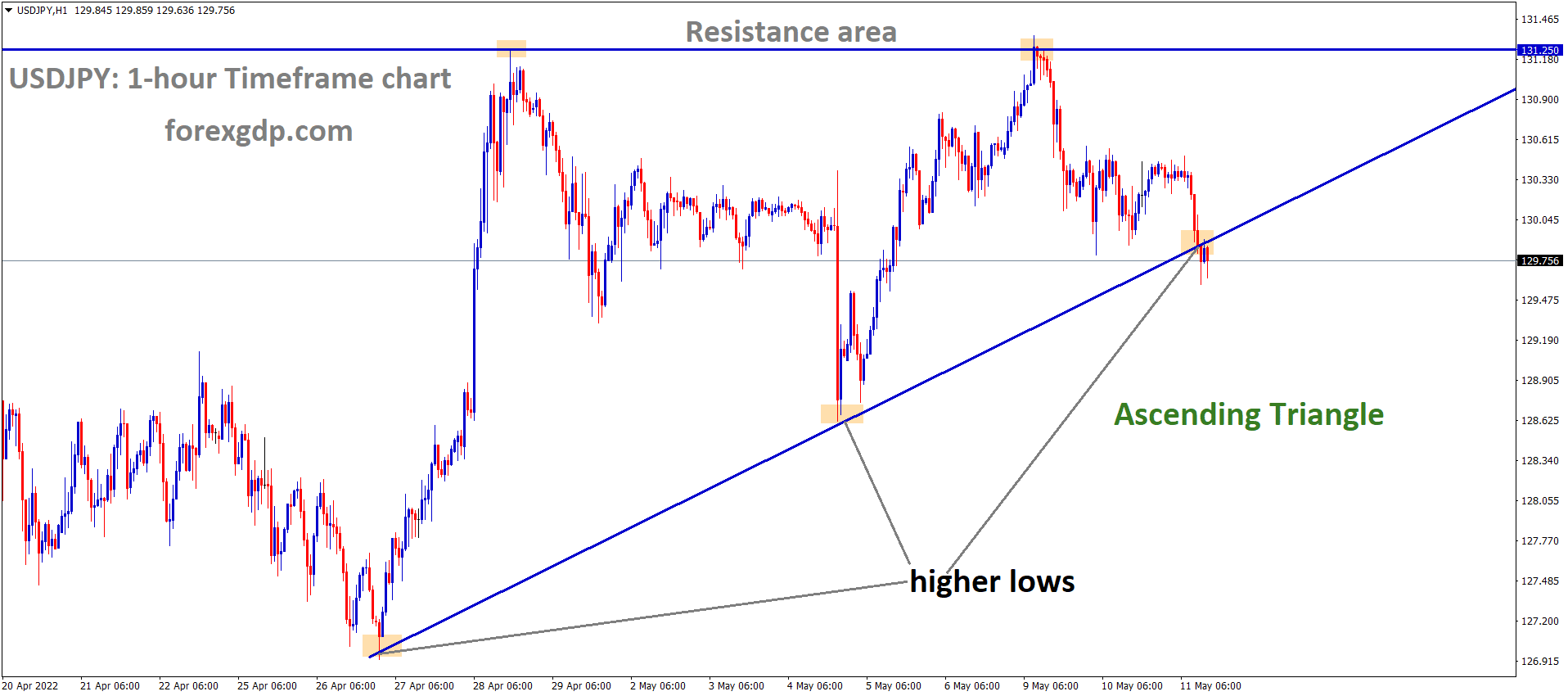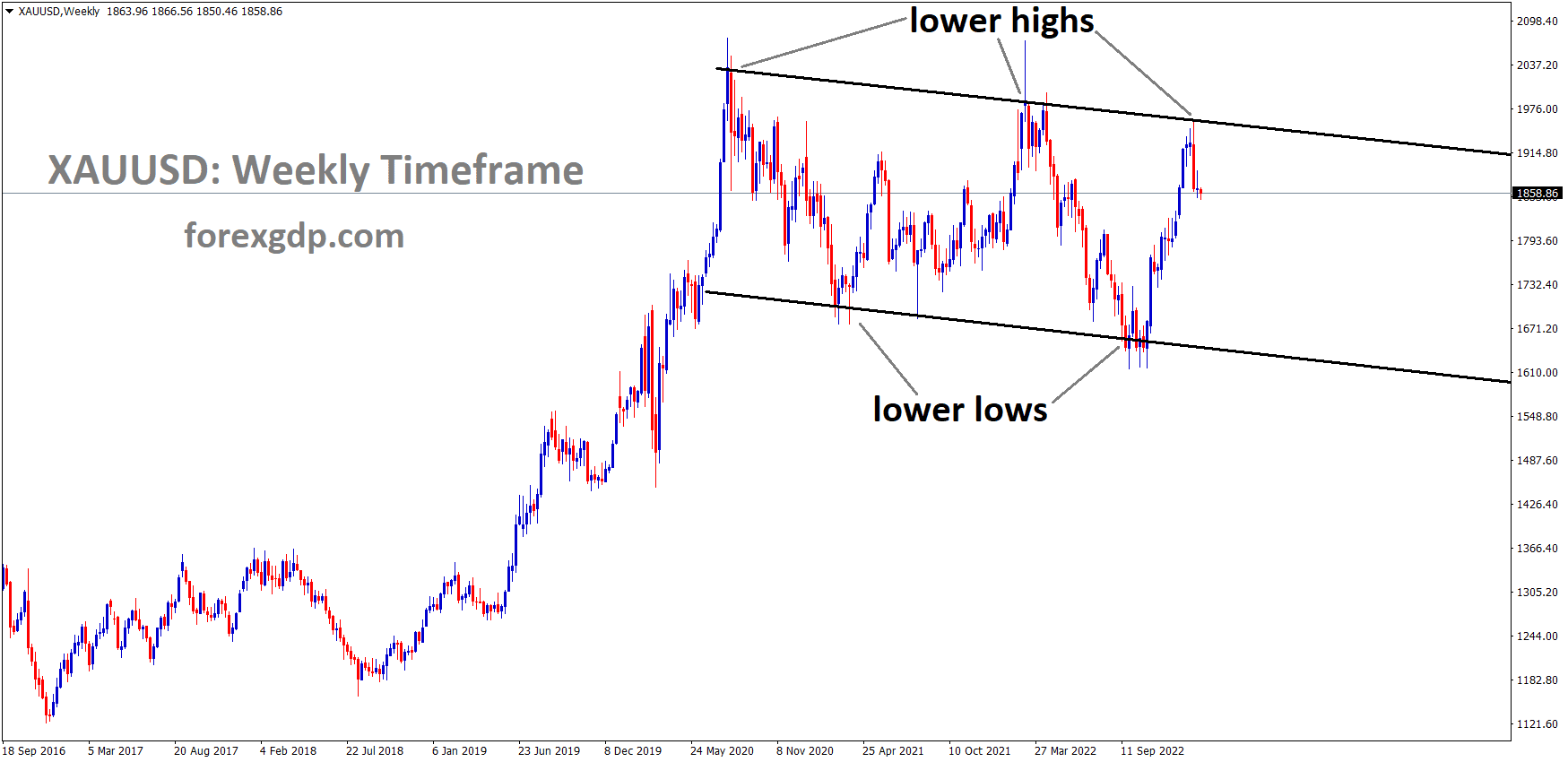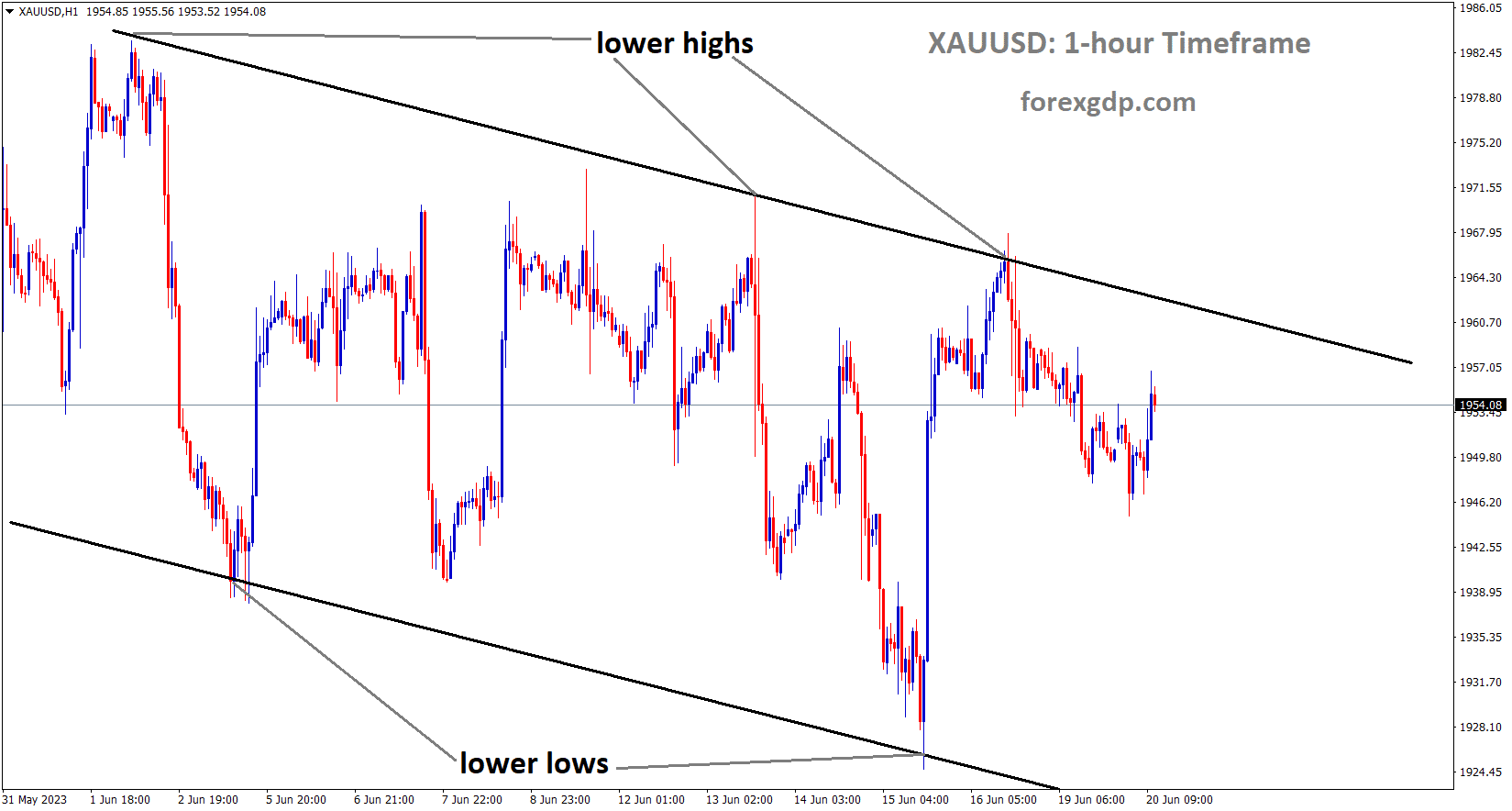GOLD Analysis
XAUUSD Gold price is moving in an Ascending channel and the market has rebounded from the higher low area of the channel.
Michele Bullock, deputy governor of the Reserve Bank of Australia, recently declared that the bank would maintain its current interest rate policy even if other central banks across the world did not. No international banking crisis hit Australia, and we had no shortage of liquidity options at home. Therefore, additional market tightening is unnecessary.
In response to widespread weakening in the US Dollar ahead of Wednesday’s European session, gold prices have risen to $2,021. By doing so, the XUAUSD supports the market’s belief that the US Federal Reserve will adopt a more gradual approach to monetary policy in the future. Traders are waiting for the March US CPI and the minutes from the most recent Federal Open Market Committee meeting on monetary policy. For the second day in a row, the US Dollar Index has fallen as investors reduce aggressive bets on a May rate hike by the Federal Reserve of 0.25%. According to the CME’s FedWatch Tool, roughly 70% of market participants are betting on a rate hike of 25 basis points in May from the US central bank, down from 72% the day before.
The recent softening of hawkish Fed wagers by traders can be traced back to remarks made by senior Federal Reserve officials. The presidents of the Federal Reserve Banks of New York and Chicago are three prominent examples. The XAUUSD is buoyed not only by confidence over China, one of the world’s top Gold purchasers, but also by the Fed discussions. IMF Asia-Pacific Chief Krishna Srinivasan told Bloomberg that China’s recovery was more quicker than anyone had expected.
Even after Friday’s encouraging US Nonfarm Payrolls report, it’s worth remembering that Minneapolis Fed President Neel Kashkari is less enthusiastic than the bond market on the speed of inflation’s fall, posing a challenge to US Dollar bears. The 10-year and 5-year breakeven inflation rates from the St. Louis Federal Reserve data are on par with one another, having reached a fresh one-week high the day before. After a volatile day on Wall Street, the S&P 500 Futures have settled back down to around 4,138. In addition, the sellers of US Dollars are encouraged by the rising yields on US Treasury bonds. However, US 10-year and 2-year Treasury bond rates have been on an upswing for four and five days, respectively, and are currently at 3.44 percent and 4.05 percent. According to the FOMC minutes, investors looking to buy gold in the future will need to see lower-than-expected US inflation data and no indications of when the Fed plans to raise interest rates. If not, the XAUUSD could show signs of another retracement from the critical level of resistance.
SILVER Analysis
XAGUSD Silver price is moving in an Ascending channel and the market has reached the higher low area of the channel.
Secretary of the Treasury Janet Yellen recently stated that the US economy is doing well, and FED hawks have indicated that another rate hike is likely at the May FOMC meeting.
Prior to the release of the US CPI statistics later today, the US Dollar fell during the Asian session. Except for USDJPY, most currency pairs seem to be in a holding pattern. The majority of APAC market indices witnessed modest increases on Wednesday, however Hong Kong’s Hang Seng Index fell into the red. It soared to a new high for the month above 134.00. Tencent put pressure on the index after it emerged that Prosus, a major tech investor, planned to divest a portion of its holdings, which would account for about 1% of the market value.
Despite apparent disagreements between two Fed speakers on whether or not to raise interest rates further, US Treasury Secretary Janet Yellen is confident that the world’s largest economy is doing extraordinarily well. In remarks made overnight, Minneapolis Fed President Neel Kashkari upheld his reputation as a hawk and New York Fed President John Williams saw potential for another raise to control inflation. Austan Goolsbee, president of the Chicago Fed, on the other hand, suggested a more dovish attitude, citing the current financial crisis and the most recent IMF report as justifications for caution in monetary policy. Patrick Harker, the president of the Philadelphia Federal Reserve Bank, who may be viewed as less hawkish, joined him.
However, later today’s US CPI data will be extensively scrutinised for further indications of the Fed’s rate path. At the upcoming Federal Open Market Committee meeting in early May, the interest rate markets are pricing a better-than-even likelihood of raising the target cash rate. While Brent is just above USD 85.50 barrel, the WTI futures contract is close around USD 81.50 bbl. Today, silver reached a 12-month high above USD 25.40 per troy ounce. The top of USD 2,032 per ounce set last week is another target for gold. Looking ahead, the Bank of Canada will decide on interest rates following the release of the US CPI data. An analyst poll conducted by Bloomberg predicts that the bank will keep interest rates at 4.50%.
USDJPY Analysis
USDJPY is moving in an Ascending channel and the market has reached the higher high area of the channel.
Japanese financial institutions have ample liquidity, according to Deputy Governor of Japan Shinichi Uchida, and the banking systems are not under any further strain. To achieve a stable and attainable inflation objective in Japan, we further relaxed monetary policy.
On Wednesday, the Bank of Japan’s new deputy governor, Shinichi Uchida, said the central bank would maintain monetary easing until it had reached its price stability aim. The Japanese economy is robust and secure. Even in the face of global tightening and the many stresses that have resulted from it, Japanese financial institutions have enough capital and fund-raising basis.
The increased concern over the global financial system due to western banking jitters has limited effects. The effects on Japan’s financial institutions are minimal. The economy of Japan is on the upswing and expected to continue improving. As the fiscal year progresses, the government’s efforts to rein in energy prices and dampen the impact of transferring costs will cause the annualised rate of inflation growth to slow. The goal of salary increases is to achieve price stability.
USDCHF Analysis
USDCHF is moving in the descending channel and the market has fallen from the lower high area of the channel.
In the first round of voting, the Swiss parliament rejected 109 billion Francs to alleviate Credit Suisse’s default position. After yesterday’s failed vote in the lower house, a new vote was taken today.
In the Asian session, the USDCHF pair has continued to fall, breaking below the 0.9030 level. Since the Federal Reserve expects the Consumer Price Index in the United States to moderate somewhat this year, the Swiss Franc’s downside has extended. As a result, the US Dollar Index has fallen sharply, testing the key support level of 102.00. The rapid decline in US inflation has increased the likelihood that the Fed will lower interest rates this year. The USD Index has lost some of its lustre as a result of comments made by Minneapolis Fed Bank President Neel Kashkari, who predicted that inflation will level off at 3% by the end of the year and move closer to 2% in 2019.
The latest US inflation numbers will be closely monitored for insight. The NBF forecasts Due to declining petrol and natural gas prices, the energy sub-index may have weighed negatively on the overall index. Gains in the cost of housing and pre-owned vehicles are predicted, which might lead to a 0.2% monthly increase in overall costs. The core index might have gone up 0.4% month over month, which would bring the annual rate up by 0.1% to 5.6%. Meanwhile, S&P500 futures are showing lacklustre movement, indicating modestly optimistic market sentiment amid investors’ anxiety ahead of quarterly result season. Higher interest rates and tighter credit conditions among US commercial banks have caused Wall Street to expect a decline in S&P500 earnings. In other news concerning the Swiss franc, Reuters reports that the Swiss parliament rejected, in a first round vote that was primarily symbolic, the 109 billion francs in financial guarantees used to rescue Credit Suisse last month. Since the Swiss Senate has already approved the rescue, a vote between the two houses of Switzerland’s legislature will be held on Wednesday.
USDCAD Analysis
USDCAD has broken the Ascending channel in downside.
The conclusion of today’s Bank of Canada monetary policy meeting was predicted by TDS research analysis; the hawkish range is 10% solely owing to the developed nature of the economy and lower inflation rates. The first-half baseline stays at 80% due to lower-than-anticipated inflation and higher oil costs. Overly aggressive dovishness, represented by a 10% cut in interest rates, may quickly lead to higher inflation.
The interest rate decision by the Bank of Canada is discussed, along with its potential effects on the USDCAD exchange rate, by economists at TD Securities. Treading a narrow path. As the prognosis changes in keeping with January’s MPR, the BoC maintains the same overnight rate of 4.50%. While downplaying global banking stress as an external event, the statement acknowledges Q1 GDP performance and unusually tight labour markets, which are increasingly problematic for inflation. In the April MPR, GDP growth for 2023 was revised upward, although forward guidance was maintained from the previous month. USDCAD -0.50%.
Protecting the fort. As expected, the Bank of Canada has maintained its overnight rate at 4.50%. The statement warns that overseas demand has been hit by global banking stress, but it also highlights that Q1 has been higher than anticipated. MPR reduces GDP projections for 2024 while leaving projections for 2023 unaltered. Conditional hold and forward guidance are both unchanged. USDCAD -0.15%. Limiting access to hikers. While the MPR reduces its GDP CPI forecast for 2023, the BoC maintains its target rate of 4.50% despite playing down the strength of Q1 GDP and tight labour markets due to easing capacity pressures and a softer global environment. The statement also amends previous forward guidance by omitting future rate hikes. The US dollar gained 0.50 Canadian dollars.
USD Index Analysis
USD index is moving in the Descending channel and the market has fallen from the lower high area of the channel.
According to the IMF, global economic growth will slow to 2.8% in 2019, down from 3.4% in 2022. As a result of the banking crisis and the war between Russia and Ukraine, the energy crisis has worsened, lowering predictions for global growth in 2023.
According to the most recent IMF World Economic Outlook, advanced economies will produce less than half as much as they did last year, which would cause global growth to slow down in 2023. The US economy is predicted to expand by 1.6% this year and by 1.1% in 2024, whereas the economies of Germany and the UK are predicted to decrease by 0.1% and 0.3%, respectively, this year. First first, inflation is far more persistent than was thought just a few months ago. Although worldwide inflation has decreased, this is primarily due to the substantial fall in the cost of food and energy. However, core inflation, which does not include energy and food, has yet to reach its peak in many nations. We anticipate core inflation to moderate to 5.1 percent by year’s end this year, which is considerably above target and represents a significant higher revision of 0.6 percentage points from our January assessment.
Interest rates in developed economies are expected to return to their levels before the global financial crisis, according to an IMF study. Whether alternative scenarios including consistently increasing government debt and deficit or financial fragmentation come to pass will determine how far rates will drop.
EURUSD Analysis
EURUSD is moving in an Ascending triangle pattern and the market has reached the resistance area of the pattern.
The head of the French central bank, Francois Villeroy de Galhau, has warned that the European Central Bank must work hard to reduce inflation to the 2% objective, adding that only when excessive price growth slows down can the Eurozone economy recover from the epidemic.
As Wednesday’s European session begins, the EURUSD has dropped to 1.0915, consolidating the previous day’s bounce from a one-week low. As a result, the Euro-to-US-dollar exchange rate reflects the market’s scepticism ahead of the release of the March Consumer Price Index and the minutes from the most recent Federal Open Market Committee meeting on monetary policy. Recent contradictory comments from Federal Reserve and European Central Bank policymakers may also provide a problem for pair purchasers. However, French central bank director Francois Villeroy de Galhau told Reuters late Tuesday that the European Central Bank would continue combating excessive price growth despite a shift in the ECB’s policy approach.
But Minneapolis Fed President Neel Kashkari stokes US Dollar bears’ fears by saying the central bank should stick to its 2% inflation target. It’s worth noting that Patrick Harker, president of the Federal Reserve Bank of Philadelphia, has stated that the Fed will continue to carefully examine incoming data to assess whether or not any more action is required. New York Fed President John Williams had previously indicated that lower inflation would need rate cuts. On Tuesday, Chicago Fed President Austan Goolsbee warned that the central bank should proceed with caution when deciding whether or not to raise interest rates in light of recent developments in the banking industry. The breakeven inflation rates for the United States from the St. Louis Federal Reserve statistics continue firmer and pose a recent challenge to the EURUSD bulls.
However, the EURUSD exchange rate appears to be driven by causes other than the top-tier ones, such as the confidence surrounding the Eurozone economy and cheerful EU data, which is supported by the comments from the International Monetary Fund. This is the context in which the US Dollar Index is currently recovering near 102.15 after breaking a four-day rally the day before. The S&P 500 Futures have not moved from their current level of about 4,138 after Wall Street’s mixed closing. In addition, the sellers of US Dollars are encouraged by the rising yields on US Treasury bonds. The yield on the 10-year US Treasury bond has been rising for four days while the yield on the 2-year US Treasury bond has been rising for five days.
Future hawkish Fed Minutes and stronger US CPI readings are needed to accurately depict the EURUSD correction. Buyers of the pair continue to target the 1.1000.05 resistance until then.
GBPUSD Analysis
GBPUSD is moving in the Descending channel and the market has reached the lower high area of the channel.
President Joe Biden of the United States and Prime Minister Rishi Sunak of the United Kingdom will meet in Northern Ireland. As the number of people actively seeking employment in the UK rises, the country’s job market is relaxing from its tightest reading in a decade.
Bulls are struggling to maintain control of the GBPUSD pair in the early hours of a pivotal Wednesday, with the pair currently trading at 1.2415-20. By doing so, the Cable pair expresses cautious optimism ahead of the March US Consumer Price Index and the Minutes of the most recent Federal Open Market Committee Monetary Policy Meeting, while applauding broad US Dollar weakness and positive UK fundamentals. Andrew Bailey, governor of the Bank of England, will also be speaking, so keep an eye on that. However, recent reports from Bloomberg indicate that the British labour market is no longer competitive. A poll compiled by S&P Global revealed that the number of people available to work in the UK rose for the first time in two years, alleviating one of the tightest labour markets in more than a decade. In a similar vein, Reuters released reports indicating optimistic UK home prices, giving GBPUSD purchasers reason to be optimistic before major data releases. After plummeting in September after the failed economic plan of former prime minister Liz Truss created upheaval throughout markets, a survey indicated on Wednesday that British home sales recovered to within a whisker of pre-pandemic levels in March, signifying a comeback from the previous month. Neel Kashkari, president and chief executive officer of the Federal Reserve Bank of Minneapolis, recently remarked, 2% inflation target should not be changed, which is a tease for US Dollar bulls. The Cable bears, though, have been pushed back as other Fed policymakers have recently signalled mixed views. Patrick Harker, president of the Federal Reserve Bank of Philadelphia, was quoted as saying that the central bank will keep an eye on the statistics to see if any more action was required. New York Fed President John Williams had previously indicated that lower inflation would need rate cuts. On Tuesday, Chicago Fed President Austan Goolsbee warned that the central bank should proceed with caution when deciding whether or not to raise interest rates in light of recent developments in the banking industry.
The IMF has lowered its prediction for global real GDP growth in 2023 from 2.9% in its report issued in January to 2.8%. However, the global lender stands by the efforts of the main central banks to combat inflation and provides no clear indications to traders of the GBPUSD currency pair. While US Treasury note yields grind higher and prod US Dollar sellers, S&P 500 Futures drift after a volatile day on Wall Street. To counter the GBPUSD bulls, the FOMC Minutes will need to defend the rate hike trajectory, while market expectations call for headline CPI to drop to 5.2% YoY from 6.0% before. The meeting between US Vice President Joe Biden and UK Prime Minister Rishi Sunak in Northern Ireland is also something to keep an eye on.
NZDUSD Analysis
NZDUSD is moving in the descending channel and the market has reached the lower high area of the channel.
Due to the outcome of today’s US CPI statistics and the FED FOMC meeting minutes, the NZDUSD has fallen in value. The New Zealand dollar is vulnerable because of the Chinese government’s decision to lower inflation after the outbreak.
Wednesday morning in European trading, the NZDUSD pair is still trading below the 0.6200 level, having failed to recover from a nearly four-week low. The US dollar is at its weekly low as investors come to terms with the fact that the Federal Reserve is likely at or near the end of its rate-hiking cycle, which helps the NZDUSD pair attract some buying near the mid-0.6100s. Meanwhile, market participants continue to price in a higher probability of a 25 bps lift-off at the upcoming FOMC meeting in May. For the time being, US Treasury bond yields are supported, which is positive for the Greenback.
However, concerns of a more severe global economic slowdown provide some support for the safe-haven dollar and help limit the reaction of the risk-averse New Zealand dollar. In reality, the International Monetary Fund reduced its forecast for global growth in 2023 on Tuesday, citing the effect of increasing interest rates as the primary reason. In addition, Minneapolis Fed President Neel Kashkari expressed concern that monetary policy steps that tighten credit conditions could trigger a recession. The US consumer inflation numbers are due later during the early North American session, and traders appear hesitant to make bold directional wagers. After that, the minutes from the previous FOMC meeting, where hints regarding future rate increases by the Fed will be discussed, will be released. The next directional move for the NZDUSD pair will be mostly determined by the important releases, which will have a significant impact on the near-term USD price dynamics.
Acceptance below the 0.6200 round number may be considered as a new trigger for pessimistic traders, lending credence to the possibility of more declines from a technical standpoint. However, we should proceed with care as purchasing activity emerges at lower prices. Given the current technical uncertainty, it would be wise to wait for some confirmation of follow-through purchasing before positioning for any further gains after the recent pullback from the 0.6380 area, the highest level since February 14.
AUDNZD Analysis
AUDNZD is moving in an Ascending channel and the market has reached the higher high area of the channel.
Michele Bullock, the deputy governor of the Reserve Bank of Australia, has suggested that the bank will keep its rates steady even if other central banks across the world choose not to pause their own monetary policies. There was no international banking crisis that affected Australia, and our domestic banking system has more than adequate liquidity. Therefore, there is no need for further market tightening.
On a panel titled Monetary policy since the pandemic, Michele Bullock, Deputy Governor of the Reserve Bank of Australia, will be discussing recent developments. What have we learned from the Western Economic Association International Conference in Melbourne? Even without widespread financial turmoil, we still would have suspended rate increases. Now that interest rates have reached a limiting level, we can pause for observation. Have a desire to reduce inflation and preserve recent employment gains. There is no evidence domestic banks are limiting lending in response to global uncertainty.
Don’t trade all the time, trade forex only at the confirmed trade setups.
Get Live Free Signals now: forexgdp.com/forex-signals/

